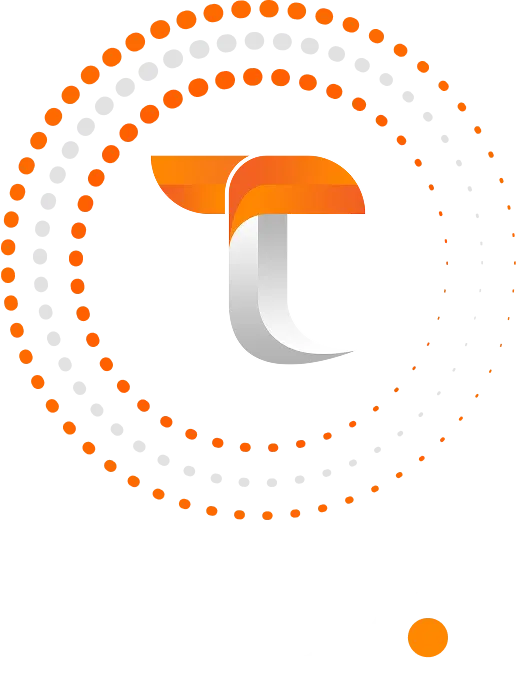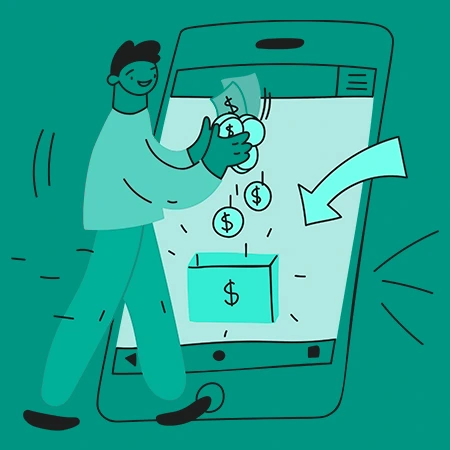Mobile app monetization is all about generating revenue from your app.
It involves carefully selecting strategies that balance profit and user experience.
In this blog, we explore a variety of revenue models—from advertising and in-app purchases to freemium and subscriptions.
We’ll examine real-world examples from top apps like Facebook, Candy Crush, and Netflix that showcase impressive revenue generation.
You’ll also find a detailed table highlighting the best monetization strategies for industries such as gaming, social networking, productivity, education, and health & fitness.
Finally, we discuss how combining multiple approaches can further boost your app’s financial performance while maintaining a smooth user experience.
What is a Monetization Strategy?
A monetization strategy defines how your mobile app generates revenue.
It’s the blueprint that outlines methods to turn user engagement into profit.
It includes choosing revenue models that match your app’s purpose and target audience.
Whether through ads, in-app purchases, subscriptions, or a freemium approach, your strategy guides every decision.
A strong monetization strategy balances profitability with a positive user experience.
It ensures that your app remains valuable to users while driving sustainable revenue growth.
Mobile App Monetization Strategies
Mobile app monetization involves various models that convert user engagement into revenue.
Below are monetization strategies, each with its own benefits, examples, and revenue potential.
These models act as monetization methods and strategies to help you build a profitable app.
1. Advertising
Advertising is a popular app monetization model that integrates various ad formats like banners, interstitials, native ads, and rewarded videos.
It targets users with tailored ads based on their behavior and demographics.

- Benefits:
- Generates revenue per impression, click, or video view.
- Scales well for high-traffic apps.
- Example:
- Apps such as Facebook and Instagram rely heavily on advertising.
- Monetization Potential:
- High-traffic apps can earn $10,000 to $50,000 per month.
2. In-App Purchases
In-app purchases are a monetization method where users buy extra content, features, or virtual goods.
This strategy enhances user experience by offering premium content or add-ons.

- Benefits:
- Creates a continuous revenue stream through microtransactions.
- Enhances user engagement with exclusive items.
- Example:
- Games like Candy Crush and Fortnite excel with in-app purchases.
- Monetization Potential:
- Earnings can range from $50,000 to $500,000 per month.
3. Freemium Model
The freemium model offers a basic version of your app for free while unlocking premium features through purchase.
This app monetization model attracts a broad user base and converts engaged users into paying customers.

- Benefits:
- Rapidly expands your user base.
- Provides ongoing revenue via premium upgrades.
- Example:
- Spotify and LinkedIn have successfully leveraged the freemium model.
- Monetization Potential:
- Revenue potential ranges between $20,000 to $200,000 per month.
4. Subscription-Based Model
Subscription-based monetization involves charging users a recurring fee for continuous access to premium content or services.
This strategy is ideal for apps with regularly updated content or exclusive features.

- Benefits:
- Provides predictable, recurring revenue.
- Promotes long-term user engagement and loyalty.
- Example:
- Netflix and Apple Music generate substantial revenue through subscriptions.
- Monetization Potential:
- Subscriptions can yield $30,000 to $300,000 per month.
5. Sponsorships & Partnerships
This monetization method involves collaborating with brands to offer exclusive content or features.
Sponsorships add curated, valuable content while creating new revenue channels.

- Benefits:
- Opens opportunities for strategic brand alliances.
- Enhances the app’s offerings with exclusive deals.
- Example:
- Lifestyle and fitness apps may partner with sportswear brands.
- Monetization Potential:
- Can bring in $10,000 to $100,000 per month.
6. Affiliate Marketing & Transaction Fees
Affiliate marketing earns commissions by promoting third-party products or services, while transaction fees are applied to purchases made through the app.
This strategy diversifies revenue streams and leverages user engagement.

- Benefits:
- Adds a secondary revenue stream alongside primary models.
- Capitalizes on existing user transactions.
- Example:
- E-commerce and service booking apps often implement these methods.
- Monetization Potential:
- Earnings can range from $5,000 to $50,000 per month.
7. Data Monetization
Data monetization leverages anonymized user data to provide insights for targeted advertising or market research.
This strategy requires strict adherence to privacy laws and ethical data handling.

- Benefits:
- Generates additional revenue without direct user charges.
- Improves ad targeting and enhances overall marketing effectiveness.
- Example:
- Apps using analytics to refine ad placements and campaigns.
- Monetization Potential:
- Can add $10,000 to $70,000 per month when combined with other revenue models.
8. Paid App Model
Charging an upfront fee for downloading your app is a classic monetization method.
This model is best suited for niche apps with dedicated, high-value audiences.

- Benefits:
- Ensures direct revenue per download.
- Filters for users who value premium, dedicated content.
- Example:
- Niche productivity or specialized utility apps often use this model.
- Monetization Potential:
- A well-positioned paid app might generate $5,000 to $50,000 per month.
9. Virtual Currency & Economy
Virtual currency monetization involves creating an in-app economy where users can purchase or earn virtual coins, credits, or tokens.
These currencies are then used to unlock special features, power-ups, or exclusive content.
- Benefits:
- Encourages ongoing transactions and user engagement.
- Creates a self-sustaining economy within the app.
- Example:
- Many gaming apps, such as Fortnite and various mobile RPGs, utilize virtual currencies.
- Monetization Potential:
- This model can generate $20,000 to $200,000 per month, depending on user base size and engagement.
10. Rewarded Video Ads
A subset of the advertising model, rewarded video ads offer users incentives like extra lives or in-app currency in exchange for watching ads.
This method is effective for boosting ad engagement and maintaining a positive user experience.
- Benefits:
- Improves user willingness to engage with ads.
- Balances ad revenue with enhanced user satisfaction.
- Example:
- Gaming apps frequently integrate rewarded video ads to offer benefits in exchange for views.
- Monetization Potential:
- Can contribute an additional $5,000 to $30,000 per month in ad revenue.
11. Crowdfunding & Pre-Orders
Crowdfunding allows developers to secure funding before launch, while pre-orders offer early access to the app.
This model serves as both a marketing tool and a revenue stream during the app’s initial phase.
- Benefits:
- Reduces upfront development costs by securing early funds.
- Validates market interest before full-scale launch.
- Example:
- Indie game developers and niche apps often use platforms like Kickstarter.
- Monetization Potential:
- Crowdfunding can raise $10,000 to $100,000 or more, depending on campaign success.
12. Licensing & White-Labeling
Licensing and white-labeling involve selling your app’s technology or design to other businesses for a fee.
This strategy turns your app into a product that other companies can rebrand and use.
- Benefits:
- Generates revenue without relying solely on end-user transactions.
- Expands market reach through B2B partnerships.
- Example:
- Software companies and utility apps often use white-label solutions to serve multiple markets.
- Monetization Potential:
- Licensing deals can bring in $5,000 to $50,000 per month or more, based on contract terms.
13. In-App Donations
In-app donations provide a monetization method where users voluntarily contribute money to support the app.
This model is common for non-profit apps, open-source projects, or community-driven platforms.
- Benefits:
- Encourages a sense of community and user support.
- Generates revenue without compromising user experience.
- Example:
- Some content and charity apps successfully integrate donation features.
- Monetization Potential:
- Donations can yield $1,000 to $10,000 per month, depending on user goodwill and engagement.
Each of these monetization strategies is a powerful tool in your app monetization model toolkit.
By understanding their benefits, examples, and potential revenue figures, you can choose the right mix to build, develop, and optimize a profitable mobile app.
Combining these strategies thoughtfully can maximize revenue while delivering an exceptional user experience in today’s competitive market.
Popular Apps & Their Monetization Models
Many successful mobile apps have mastered the art of monetization by choosing strategies that align with their user base and brand.
Below are examples of popular apps, their chosen monetization models, and insights into their revenue generation potential.
| App Name | Monetization Model | Description | Monetization Potential |
| Advertising | Leverages targeted banner, native, and video ads to serve tailored content to its vast user base. | Generates billions annually through ads. | |
| Candy Crush | In-App Purchases | Drives revenue by offering extra lives, boosters, and digital goods that enhance gameplay experience. | $50,000 – $500,000 per month. |
| Spotify | Freemium Model | Offers a free tier with ads and upgrades to premium subscriptions for ad-free listening and exclusive features. | $20,000 – $200,000 per month. |
| Netflix | Subscription-Based Model | Charges a recurring fee for continuous access to an extensive library of movies and TV shows. | $30,000 – $300,000 per month. |
| Fortnite | In-App Purchases & Virtual Currency Economy | Combines in-app purchases for skins, emotes, and cosmetics with a thriving virtual currency economy. | $50,000 – $500,000 per month during peak seasons. |
Each of these apps demonstrates how aligning your monetization model with user expectations and industry trends can maximize revenue.
By studying these examples, you can gain valuable insights into building a robust monetization strategy that drives both user engagement and profit.
Best Monetization Strategies per Industry
Different industries benefit from tailored monetization models.
Here’s outlining the optimal strategies for various sectors, including examples, revenue potential, and key considerations.
| Industry | Best Monetization Strategies | Examples | Monetization Potential | Key Considerations |
| Gaming | In-App Purchases, Virtual Currency, Rewarded Video Ads | Candy Crush, Fortnite | $50,000 – $500,000+ per month | High user engagement; frequent microtransactions and seasonal peaks |
| Social Networking | Advertising, Freemium, Sponsorships | Facebook, Instagram | $10,000 – $50,000+ per month | Balancing ad load with user experience; leveraging large user bases |
| Productivity | Paid App, Subscription, Licensing/White-Labeling | Evernote, Microsoft Office Mobile | $5,000 – $100,000+ per month | Value-driven content; enterprise-focused features and B2B sales |
| Education | Freemium, Subscription, In-App Purchases | Duolingo, Khan Academy | $10,000 – $100,000+ per month | Delivering high-quality content; scalable premium features |
| Health & Fitness | Subscription, In-App Purchases, Affiliate Marketing | Fitbit, MyFitnessPal | $10,000 – $200,000+ per month | Maintaining data privacy; offering personalized, actionable insights |
| E-Commerce | Affiliate Marketing, Transaction Fees, Sponsored Listings | Amazon, eBay | $5,000 – $50,000+ per month | High conversion rates; integration with secure payment gateways |
| Media & Entertainment | Subscription, Advertising, Freemium | Netflix, Spotify | $30,000 – $300,000+ per month | Continuous content updates; high user retention and engagement |
| E-Wallet | Transaction Fees, Subscription, Affiliate Marketing | PayPal, Venmo, Google Pay | $5,000 – $100,000+ per month | Emphasis on security, regulatory compliance, and seamless payment integration |
| Fintech | Transaction Fees, Subscription, Licensing, White-Labeling | Robinhood, Square, SoFi | $10,000 – $300,000+ per month | Trust, robust security, regulatory adherence, and user data protection |
By choosing the right mix for your industry, you can build a robust and profitable mobile app monetization strategy in 2025.
Combining Monetization Strategies for Maximum Revenue
To maximize revenue, consider blending multiple monetization methods.
Combining strategies allows you to balance user experience with diverse revenue streams, ensuring sustainable growth.
When you develop a mobile app monetization strategy, think about how different models complement each other.
For example, pairing a freemium model with in-app purchases can attract a large user base while converting engaged users into paying customers.
- Enhance User Experience:
-
- Use advertising in non-intrusive ways alongside premium content.
- Offer free access with ads, but allow users to remove ads through a subscription or one-time purchase.
- Diversify Revenue:
-
- Leverage in-app purchases for extra features and subscriptions for ongoing content access.
- Implement affiliate marketing to earn commissions while generating sales from partnered products.
- Cross-Promote Features:
-
- Bundle services or offer discounts when users combine multiple premium features.
- Encourage users to upgrade by demonstrating the added value across different monetization methods.
By thoughtfully combining these strategies, you can build a robust monetization model that adapts to various user segments.
This integrated approach ensures steady revenue growth while delivering an engaging, seamless experience in today’s competitive mobile landscape.
Challenges & Considerations in Mobile App Monetization
While there are numerous monetization strategies, implementing them effectively comes with its challenges.
Balancing revenue generation with a seamless user experience is key.
| Challenge | Description | Solution | Key Considerations |
| User Retention vs. Revenue | Aggressive monetization can lead to high churn and loss of loyal users. | Balance revenue streams with value-driven features; use non-intrusive models like freemium or subscriptions. | Monitor user feedback and adjust pricing/features accordingly. |
| Ad Intrusiveness | Excessive or disruptive ads may negatively impact user experience. | Implement rewarded ads, limit ad frequency, and ensure ad placements are contextually appropriate. | Test different ad placements to find the optimal balance. |
| Privacy and Compliance | Monetizing user data must comply with GDPR, CCPA, and other privacy laws. | Adopt robust data encryption, anonymize data, and ensure transparent user consent and clear privacy policies. | Regularly update policies to adhere to changing regulations. |
| Market Saturation | High competition in popular app categories makes monetization challenging. | Differentiate with unique features, combine multiple revenue models, and continuously innovate. | Research competitors and tailor offerings to niche market segments. |
| Technology Integration | Integrating multiple monetization models can create technical complexities. | Use modular architecture, conduct extensive testing, and employ agile iteration to ensure smooth integration. | Ensure scalability and maintain seamless user experience. |
By addressing these challenges head-on, you can fine-tune your mobile app monetization strategy to maximize revenue while keeping users engaged and satisfied in the competitive 2025 landscape.
TISA – Turning Concepts into Revenue Generating Apps
TISA is a premier app development company that excels in crafting innovative mobile solutions.
Our expertise in designing high-performance apps enables us to integrate advanced monetization models seamlessly, ensuring maximum revenue generation.
From advertising and in-app purchases to subscriptions and beyond, TISA tailors strategies to your app’s unique needs.
Partner with us to build a robust, scalable app that not only delights users but also drives substantial profit.
Let TISA guide you in creating the next generation of successful mobile apps.
Conclusion
Mobile app monetization is a dynamic process that requires a well-crafted strategy to convert user engagement into sustainable revenue.
By understanding various monetization models—from advertising and in-app purchases to subscriptions and affiliate marketing—you can tailor your approach to suit your app’s niche and user needs.
Integrating industry-specific strategies and combining multiple revenue streams not only diversifies income but also enhances user experience.
Addressing challenges such as ad intrusiveness and data privacy ensures that your monetization efforts are both effective and ethical.
Now is the time to refine your monetization strategy, test different models, and innovate continuously.
By leveraging these insights, you can build a robust revenue model that propels your app to success in the competitive 2025 landscape.
FAQs
What is mobile app monetization?
Mobile app monetization is the process of generating revenue from your app through various revenue models.
It involves turning user engagement into profit using strategies like advertising, in-app purchases, subscriptions, and more.
What is a monetization strategy?
A monetization strategy is a comprehensive plan that outlines how your app will earn money.
It defines the revenue models and methods you will use while ensuring a balance between user experience and profit.
Which monetization models generate the highest revenue?
Models like in-app purchases and subscriptions typically generate high revenue, especially in gaming and streaming apps.
The right mix depends on your app’s niche and user behavior.
How do I balance user experience with monetization?
Striking a balance is key—avoid intrusive ads and aggressive pricing.
Focus on value-driven features, seamless integration of monetization methods, and continuous user feedback.
Can I combine different monetization models?
Yes, combining strategies can diversify revenue streams and maximize profit.
For example, pairing a freemium model with in-app purchases or advertising enhances overall revenue while keeping users engaged.
What challenges should I expect?
Common challenges include ad intrusiveness, data privacy, and technology integration.
Address these by implementing non-intrusive ad placements, robust security measures, and a modular architecture.
Are there industry-specific monetization considerations?
Absolutely.
Different sectors—gaming, social networking, fintech, or e-wallets—benefit from tailored strategies to meet their unique user needs and revenue goals.





